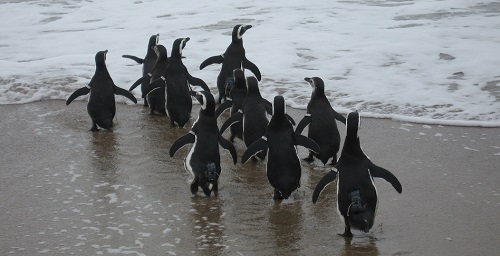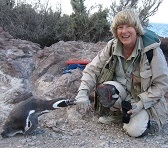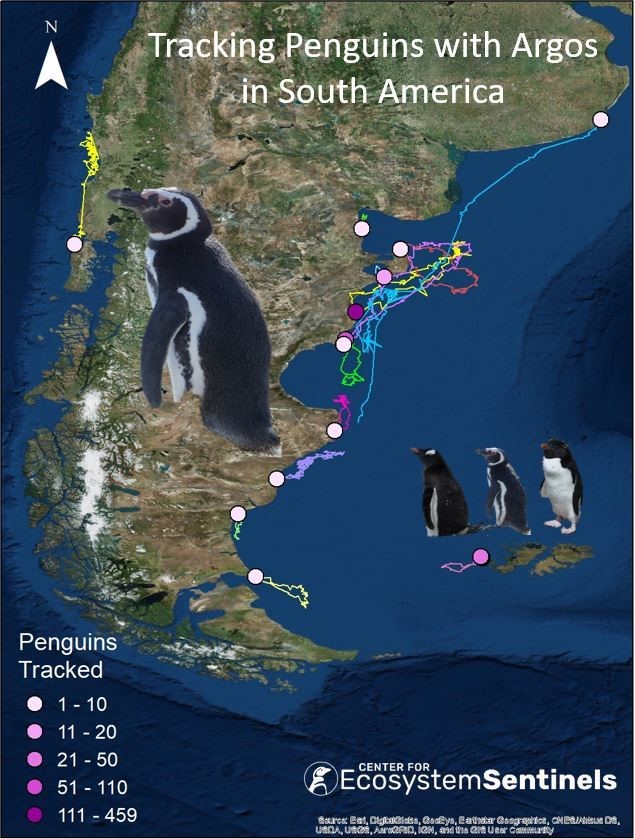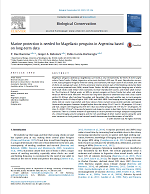← Back
Establishing a marine reserve for Magellanic penguins

From 1996 – 2018, the Center for Ecosystem Sentinels tracked 459 penguins from Punta Tombo using the Argos system, shedding new light on home range, foraging patterns, and how climate change influences these animals. Data collected has been used to design marine protected areas in the Province of Chubut, Argentina. A reserve at Punta Tombo was specifically designed for Magellanic penguins when they have small chicks (Boersma et. al, 2015).
Studying and protecting penguins
The Center for Ecosystem Sentinels at the University of Washington is dedicated to studying and protecting Magellanic penguins. Magellanic penguins are considered “Near Threatened” globally by the IUCN and their population is in decline. At Punta Tombo, Argentina, the population has declined by 38% since 1987. The Center for Ecosystem Sentinels used its long-term dataset to determine that most chicks starve within 30 days after hatching. Satellite tracking data showed penguins that successfully raised chicks foraged closer to the colony than those who’s chicks starved.
Establishing a marine protected area
Dee Boersma, Director of the Center, and her team have studied the reasons for this decline for 35 years and showed that about 40% of the chicks starve each year. In 2015, the province of Chubut established a marine protected area 37 miles along the Argentine coast. Establishing a marine protected area is an important first step. The next step will be enlarging this protected area to make sure penguins have access to food closer to the colony and to reduce their competition with fisheries. The Center also studies Galápagos penguins, the most endangered of all 18 species of penguin.
To learn more about their work and to see videos about penguins, visit ecosystemsentinels.org.
More about the Magellanic VIP satellite-tracking program: https://ecosystemsentinels.org/magellanic-vip-program/


Dr. Dee Boersma, Argos user since 1996
“Being able to track penguins at sea using Argos technology has opened new insights into the natural history and breeding biology of penguins. From our satellite tracking, we know that Magellanic penguins can swim 176 km per day and some individuals swim at the same speed day and night, presumably because they are so anxious to return to the colony to feed their chicks.”

Penguins tracked by the Center for Ecosystem Sentinels of the University of Washington.
Species studied
- Galápagos penguins: https://ecosystemsentinels.org/galapagos-penguin-project/
- Magellanic penguins: https://ecosystemsentinels.org/magellanic-penguin-project/
More info about birds tracking
About the Center for Ecosystem Sentinels
![]()
The Center for Ecosystem Sentinels housed at the University of Washington, uses information from the study of sentinel species to educate scientists, the public and policy makers. Just as canaries alerted coal miners to dangerous air quality, ecosystem sentinels serve as early warning systems of natural or human caused environmental change. Many of these sentinel species are also iconic, charismatic animals with a great ability to inspire individuals to take action. The Center is concerned with how alterations, whether natural or human, are impacting the health and well-being of these species and the ecosystems upon which we all depend.
Source: https://ecosystemsentinels.org/the-center-for-ecosystem-sentinels/

